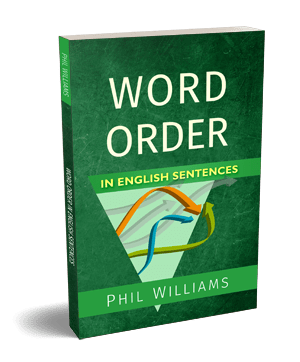
I’ve had a few queries lately asking for more information about using the future tenses in the past. This is used when we want to talk about events yet to occur but from a past perspective.
This is a topic that was actually added to the later versions of The English Tenses Practical Grammar Guide, and can be found in full there, but I thought it would be useful to share it here too.
The Future in the Past
When you want to discuss time from a different perspective, for instance to show a future time seen in the past, tenses must be backshifted. This involves changing a verb form to a past position (e.g. “I say” -> “I said”). This article will cover such construction and use for the future.
Future in the Past Form
Future time in the past is formed with either would or was/were going to in place of will or am / are going to (as used in regular future forms). Future time in the past cannot be formed with the present tenses for future meaning.
This usually happens after an introducing clause in the past (for example with reported speech).
|
Regular Future |
Future in the Past |
|
I will eat dinner later. |
I said I would eat dinner later. |
|
You are going to read more. |
You said you were going to read more. |
|
We will be watching a film. |
We thought we would be watching a film. |
|
They are going to be playing football. |
He said they were going to be playing football. |
|
He will have finished the essay. |
He would have finished the essay. |
|
She will have been living there for a long time. |
She would have been living there for a long time. |
The forms of would or was/were going to may be used interchangeably, though the differences of uses between will and going to for the future generally apply.
Future in the Past Uses
Future time in the past is used to show that in the past it was thought that something would happen in the future. That future plan or expected event may or may not have happened (or may still happen later).
- I thought I would travel to Africa at the end of the year. She was going to learn to dance.
This use of the future in the past may show a future event is yet to be completed, and was recognised in the past.
- This morning, he started to think he was going to fail his exam.
This example shows when he started to believe this future event (to be going to fail) would happen. He may still fail in the future.
Future time in the past may clearly show something did not happen, though it was expected to.
- She was going to keep the letter, but her father tore it up.
- The advert said they would perform at 10pm, but they were late.
These examples shows past future plans that were not completed.
Future time in the past may also show future events recognised in the past that were completed.
- I told you we would win the game, and we did.
This use usually emphasises that the completed result was predicted before it happened.
The future simple in the past, as in the above examples, is used for similar purposes to the future simple. For more complicated future times you can use other future tenses in the past, guided by the same rules for use in the future.
For example, the future continuous in the past can show that in the past it was thought an ongoing event would be happening at a specific time in the future:
- I thought I’d be watching TV at 9pm.
The future perfect in the past can show that in the past it was thought an action or event would be complete at a specific time in the future:
- On Monday we thought that by Friday the boy would have returned.
Note, the future perfect in the past is also used as part of third conditional statements. This is a specific construction that demonstrates a past possibility.
- If we had caught our train, we would have been home by now.
The future perfect continuous in the past can show that in the past it was thought an action or event would have been ongoing for a certain duration of time in the future:
- It was believed that the students would have been studying for over four years by the time they left university.
These uses can seem very complex, because to understand how they fit together you may need to keep at least three references of time in mind: the time that your statement is said, the past time that your statement refers to, and the future time that the past action or event referred to.
I hope this helps as an introduction to the future in the past! For more on the English tenses in general, do check out The English Tenses Practical Grammar Guide, and test your skills with my full exercise book!








Thanks man ! I requested you for this
You’re welcome, I hope it helped.
Phil
Hi Phil, In your example above you state:
Note, the future perfect in the past is also used as part of second conditional statements. This is a specific construction that demonstrates a past possibility.
If we had caught our train, we would have been home by now.
Isn’t this an example of the third conditional? Thanks.
Regards,
Angelo Pepe
Hi Angelo,
Yes, you’re right, that should say third conditional, thanks for pointing that out, apologies for any confusion caused!
Phil